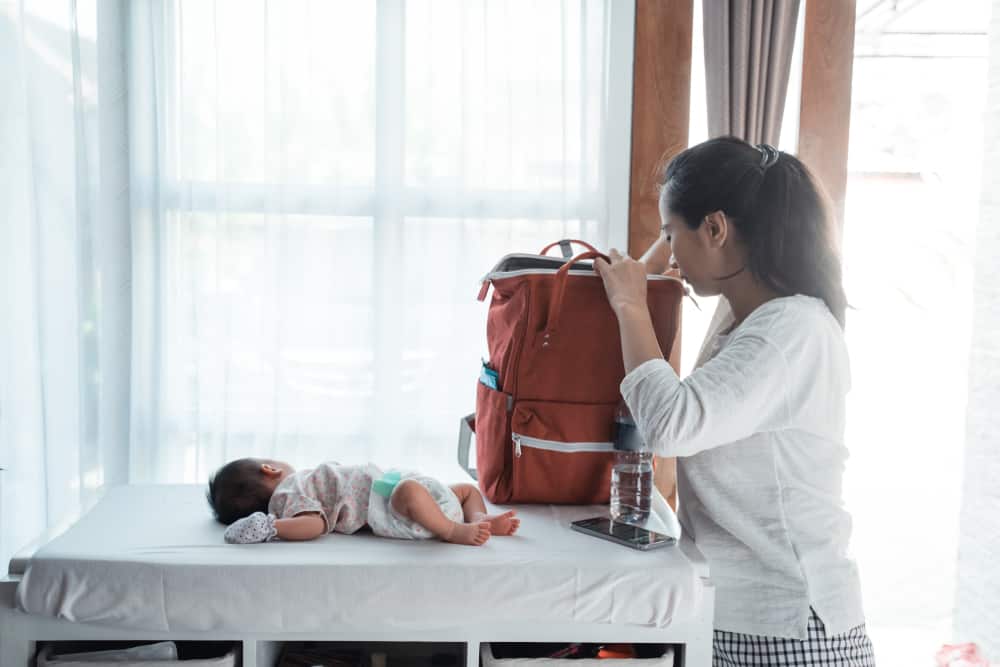1. SAFE SWADDLING TIPS
Swaddling is an excellent way to provide baby with a safe and secure sleep. It mimics the womb and controls the startle reflex, which often will wake baby up. However, there are a few important things to consider before swaddling your infant:
• To swaddle correctly, wrap arms snug, straight at the side, but let the hips be loose and flexed.
• Use a specially designed swaddle blanket. These come with full instructions and fasteners to keep baby secure and safe.
• Swaddling is only for babies sleeping on their backs. Never ever put a swaddled baby down on their stomach.
• Don’t swaddle when awake. Babies only need to be swaddled during fussy periods and when it’s time for sleep.
• Once baby is rolling over or resisting the swaddle and wanting arms out, it’s time to transition to a baby sleeping bag.
2. NINE TIPS TO BREASTFEED YOUR BABY
1. Accept that breastfeeding is hard for many new mums
Yes, breastfeeding is natural but it doesn’t come naturally. Breastfeeding is a learned skill for both you and your baby.
2. Focus on the latch
If baby isn’t latching correctly, it can lead to pain and frustration. You want baby’s lips to be like big fishy lips on the breast, not tucked under.
3. Find a position that works for you and bub
For many new mums, the football hold is the most comfortable. Try different positions to find one that feels most natural.
4. Keep a hair tie on your wrist
If baby happens to only want one breast per feed, you can keep track of which breast is up next with alternating a hair tie.
5. Prepare to become a full-time milk machine
Most new mums will spend the majority of those first days feeding bub (or expressing your engorged breasts).
6. Have plenty of water handy
Breastfeeding can make you incredibly thirsty and hungry. Have a water bottle close by (and some snacks too).
7. Invest in the right supplies
You’ll need nipple cream and possibly nipple shields, breast pads, a breast pump, bottles and a breast-feeding pillow.
8. Prepare for excess milk
After a feed, it’s normal for babies to spit up. Have a towel handy for excess spills to make it more comfortable for you and baby. If you are concerned your baby is vomiting, speak to your doctor and try to take note of how often it’s happening and how much milk is coming back up.
9. Relax
If you’re used to a fast-paced lifestyle, then spending eight hours (or more) a day sitting down breastfeeding may be a tough adjustment. Don’t fight it; let your body and mind slow down. Remember, there is nowhere else in the world you need to be than right here, feeding your new baby. Once baby latches, take a deep breath and relax.
3. NAPPY TIPS

Know your nappies – Every brand of disposable and reusable nappy is slightly different in size, shape and contour. What’s the best way to know which brand is right for your baby? Test them out. Nappies should fit snuggly around the waist and legs without being too tight.
Stay stocked – Prepare for the inevitable poonami with all your ‘essentials’ ready to go, especially when out and about. Make sure that you restock your nappy bag before you go with the following:
• A spare change of clothes (or two) • Nappy cream
• A hand towel or wash towel • Nappies
• Baby wipes
• Nappy bin bags
Aim to change often – During those first few weeks, your newborn will probably go through eight to 12 nappies a day. Some will be dirty, others just wet. It’s important to change bub often (after every feed or poop) even during the nights. This keeps baby’s skin clean and bacteria-free.
Hot tip – Always have a clean nappy under the one you are taking off to avoid accidents.
Your Baby Poop Colour Code Guide
Baby poo is a strange thing. It can vary depending on your feeding choice and bub’s development. The first poo, known as meconium will be thick, brown and tar-like. Breastfed babies will generally have yellow or yellow-green soft, seedy poo. Formula fed babies’ poo may be thicker, firmer and browner. In general, yellow, brown and green poo is normal in infants. But bloody, black or white poo may indicate a health problem.
4. TRY THE GLASS RASH TEST
There are a number of reasons why your infant might have a rash. It could be something common like heat rash, or it could be something serious like meningococcal which is considered a medical emergency.
To determine if your baby’s rash does require immediate medical treatment, try the glass test. One sign of meningococcal is that the rash doesn’t fade when pressure is applied against the skin.
- Press the side of a clear drinking glass firmly against baby’s skin.
- Check to see if the spot or rash fades from this pressure.
- If your baby has a fever and the spots or rash are not fading under pressure, then seek medical help immediately. Baby may also display other symptoms such as a fever, high moaning cry, refusing to eat, being difficult to wake or bruising.
5. HOW TO CHECK IF YOUR BABY IS TONGUE-TIED

This condition affects four to 11 percent of newborns and occurs when the thin membrane under baby’s tongue restricts the movement of the tongue. The most common sign that your baby could have tongue-tie is problems breastfeeding. Here’s what to look for:
- Nipple pain and damage. Keep in mind this can be caused by a number of things, including a poor latch.
- Flattened nipple after breastfeeding. You may see a compression mark on your nipple.
- Bub is constantly fussing at the breast.
- Bub is failing to gain weight well.
- The tip of baby’s tongue is heart-shaped.
If you notice any of the above symptoms, bring them up with your doctor who can make an accurate diagnosis.
6. DECODING BABY COUGHS
Babies under four months of age rarely cough. If they do, it could be one of these conditions:
Common cold or flu – a dry hack cough accompanied by stuffy nose, slight fever and mucus.
Croup – a barking cough.
Pneumonia – a wet or phlegmy cough accompanied by sleepiness and a green or yellow mucus discharge.
Bronchiolitis – a wheezing cough accompanied by noisy breathing, slight fever and loss of appetite.
Whooping cough – a loud, rapid cough accompanied by bulging eyes, face discolouration and tongue sticking out. Seek medical help immediately.
Foreign object – a small, persistent cough accompanied by gasping or wheezing – seek medical help immediately.
7. COMMON COLDS

Nine tips for easing common cold symptoms in infants:
- Try saline drops or a nasal suctioning device to help remove mucus from baby’s nose.
- Use a steam vaporiser to help stuffy noses and coughs.
- Try paracetamol to treat mild fevers, and or Children’s Cold & Cough tissue salts from the pharmacy.
- Run a warm bath for you and baby.
- Offer skin to skin contact and lots of cuddles.
- Give plenty of extra fluid (breastfeeds or bottlefeeds).
- Put Euky Bearub on babies socks.
- Serve easy to swallow foods. Babies often don’t want to eat because their throat is sore.
- Be patient! Colds usually clear up on their own.
8. FEVERS – WHEN TO CALL A DOCTOR

Seeing your baby’s temperature spike is scary to say the least. Knowing what to do and when to seek help is so important, for your baby’s health and your peace of mind.
If your baby is under 3 months and is experiencing any fever 38 degrees or higher – see a doctor straight away.
If your baby is over 3 months and is experiencing any fever 38 degrees or higher for over 24 – 48 hours or is acting unwell – please seek medical attention. They may only need observation or may need investigations, but either way, it is better to be safe and see a doctor.
Your baby can have what is called a Febrile Seizure if their temperature gets too high. It’s scary for parents, but remain calm, and contact medical professionals.





